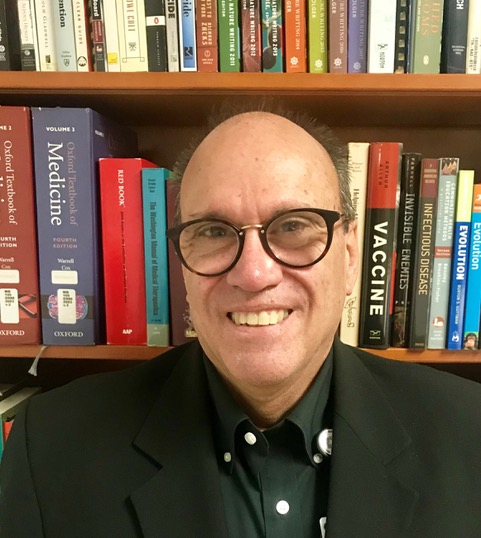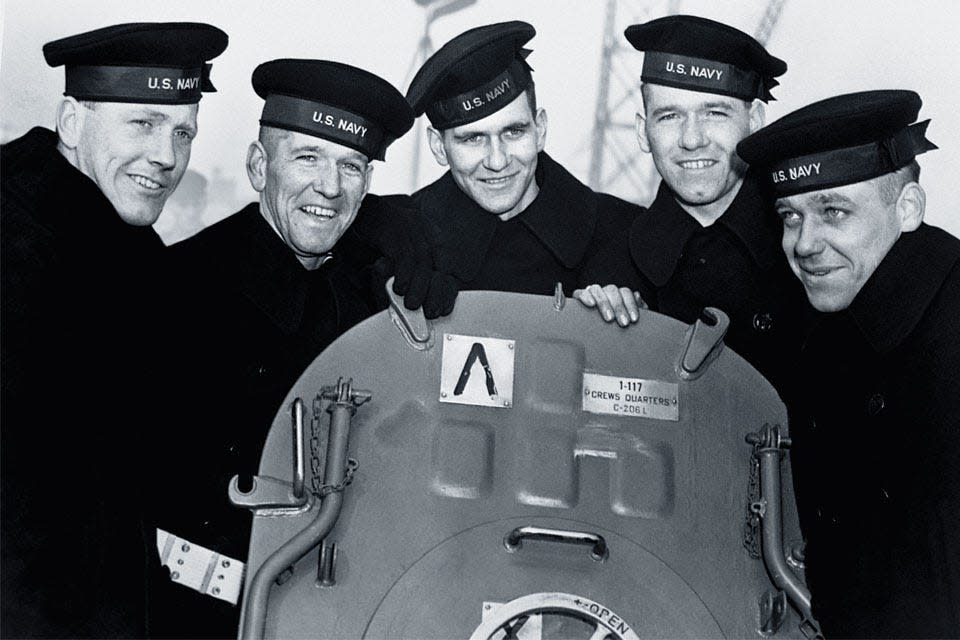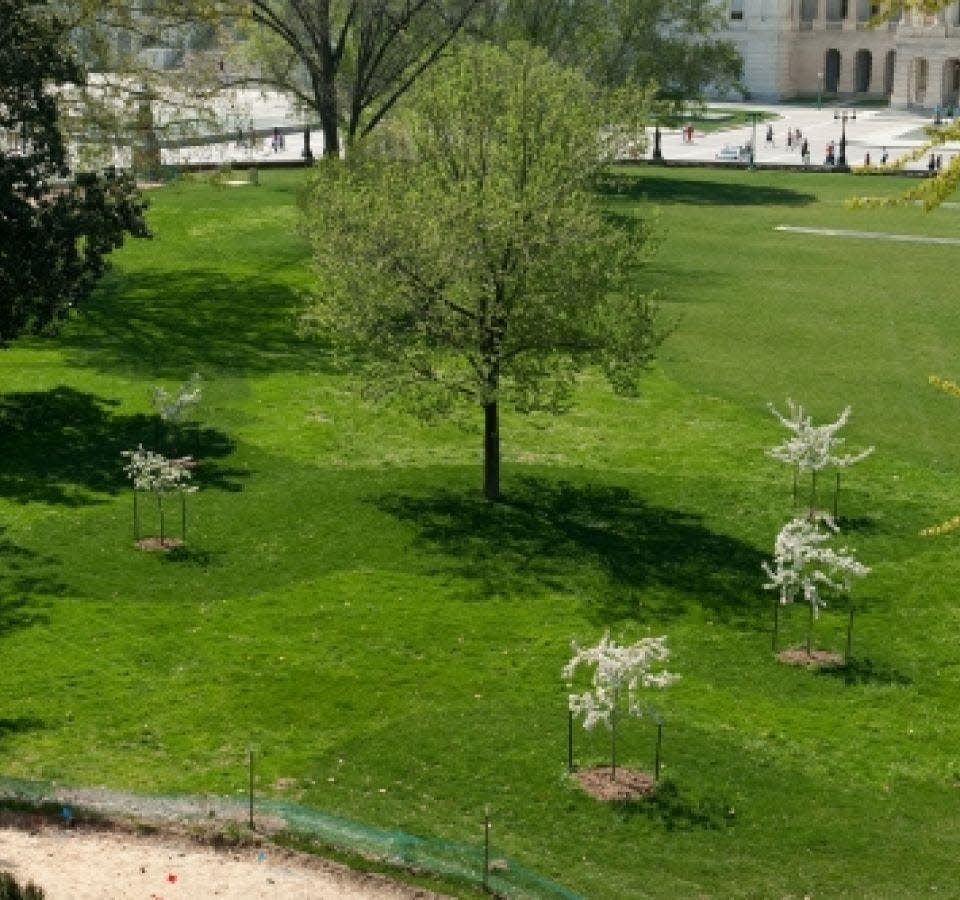Memorial Day: The sacrifice of the Sullivan brothers
- Oops!Something went wrong.Please try again later.
A 15-minute walk from my home in Haymount, outside of downtown Fayetteville, lies the Cumberland County World War II Memorial at Freedom Park. As is typical of most war memorials across the nation, it consists of markers with a list of names that remember the fallen from the county.
Fifteen years ago, before I moved to Fayetteville, I lived four blocks from the U.S. Capitol. On the grounds of the Capitol stands a giant white oak. Surrounding it are five crabapple trees. The trees were originally planted in 1952 and replanted in 2008 from the original saplings.
More: Quaker House director: Medicaid expansion will help NC veterans

As spring turns to summer the crabapples begin to bud. Day after day people walk by this spot oblivious to the small plaque that lies underneath the trees.
-----
The black sedan with U.S. Navy license plates slowly drove down the street. Its mere presence was ominous. All who saw the car that morning knew that it brought a telegram that began, “We regret to inform you....” The car stopped in front of 98 Adams Street, in Waterloo, Iowa.
More: Why do we observe Memorial Day? Here's the true history of the holiday
More: Opinion: Christmas during wartime, a look back at the holidays during WWII
The three officers were somberly welcomed inside. The patriarch of the family knew that they bore bad news. “Which one?” Thomas Sullivan asked matter-of-factly. It was early on the morning of Jan. 11, 1943, and Thomas was the only one moving about. Lt. Commander Truman Jones swallowed hard. It was the saddest, most disagreeable task of his Navy career.
"I'm sorry, Sir. All five," he said matter-of-factly.

The rest of the family soon gathered in the living room — mother Alleta, sister Genevieve, and Katherine Mary, wife of the youngest brother, Al. It was a moment filled with sorrow and grief. The telegram was read out loud:
"The Navy Department deeply regrets to inform you that your sons Albert, Francis, George, Joseph and Madison Sullivan are missing in action in the South Pacific."
A little over a year earlier on Sunday afternoon, the Sullivan Brothers listened intently to reports of the Japanese sneak attack on Pearl Harbor. Few Americans had ever heard of Hawaii. But what was clear was that it was a part of the United States.
It was a treacherous deed. Indeed, President Franklin Roosevelt declared, “Yesterday, December 7, 1941 — a date which will live in infamy — the United States of America was suddenly and deliberately attacked by naval and air forces of the Empire of Japan.”
The two eldest brothers, George and Frank, both Navy veterans, searched for news of former shipmates. The brothers soon learned that five friends had been killed. The declaration of war and the death of their friends moved the brothers to enlist in the Navy. They insisted, however, that they be allowed to serve together.
On June 1, 1943, the USS Juneau, an Atlantic-class light cruiser sailed out of New York City carrying a crew of 700 sailors, among them, all five Sullivan brothers. After patrols and escort duties in the Caribbean, the Juneau sailed for the Pacific. George, full of optimism, wrote to a friend, "Everything is OK. We like our ship. It is the best afloat."
Following the Pearl Harbor attack, the Japanese military quickly conquered what are now Malaysia, Singapore, Indonesia and the Philippines. By the spring of 1942, nearly all of Southeast Asia was under their control.
The Allies scored their first victory — the Battle of the Coral Sea in early May 1942. A month later another Japanese carrier force was defeated in the Battle of Midway.
After the Midway defeat, the Japanese began to build an air base on Guadalcanal to support their drive into New Guinea. To counter this threat, Marines landed on Guadalcanal and quickly captured the Japanese airstrip, putting it into service for the Americans. This action marked the beginning of a six-month long land, sea and air battle for this small, strategic island.
When fighting began, a large Naval task force left New Caledonia, bringing reinforcements and supplies to the beleaguered Marines on Guadalcanal. In the nine-ship convoy was the Juneau. The American ships arrived safely on Nov. 11. They had only partially unloaded their cargo when Japanese torpedo bombers began attacking.
Five American cruisers and eight destroyers immediately prepared for battle. It was a moonless night. Both forces briefly sighted each other in the darkness. Several minutes later a Japanese searchlight flicked on, and the American destroyers opened fire.
The two formations quickly mingled firing their barrage at point blank range. In less than a half-hour the engagement was over. The Japanese lost a battleship and two destroyers; five American ships were sunk or heavily damaged.
The Juneau suffered a different fate. A few minutes into the battle, a Japanese torpedo hit, leaving a gaping hole and a severed keel. The cruiser limped away, rejoining the surviving American warships at dawn.
An hour before noon, the surviving task force crossed paths with a Japanese submarine. The submarine fired three torpedoes at another cruiser, missing it. One slipped by striking the Juneau blowing it in half, killing 687 men, including the Sullivans.
On Jan. 12, 1943, the story broke. Newsreels came from far away to film the family home and record the flag with five gold stars hanging in a window.

President Franklin Roosevelt sent a letter of condolence: “An entire nation shares your sorrow.” Pope Pius XII sent a silver religious medal and rosary.
Thomas and Alleta, despite the intense pain of losing their five sons, made speaking appearances at war plants and shipyards on behalf of the war effort. Their daughter, Genevieve, joined the WAVES. In April 1943, Mrs. Sullivan christened a new destroyer, U.S.S. The Sullivans.
The building of monuments and memorials to remember those that sacrificed their lives in war, are found in nearly every town and city across America. Some are large statues of Civil War generals such as the General Grant National Memorial in New York City.
Huge savings: $1 for 6 months
Subscribe today to support local journalism and enjoy unlimited digital access including videos, apps, sports news, and more. Special introductory offer for new subscribers only.
Other memorials such as the Marine Corps Memorial in Virginia overlooking Washington, DC — better known as the Iwo Jima Memorial, with its large banner waving in the wind, honors Marines who died in defense of the country since 1775. Other memorials are somber, such as the Vietnam Memorial known as the “Wall” with its list of over 58,000 American dead.
In a quiet ceremony on June 12, 1952, Thomas F. Sullivan, father of the five Sullivan brothers planted five crabapple trees to honor his sons, who gave the ultimate sacrifice to their nation. It seems fitting that the memorial to the Sullivan Brothers is an unassuming metaphor to the sacrifices of the dead.
Dr. Cristóbal S. Berry-Cabán is a social epidemiologist at Womack Army Medical Center.
This article originally appeared on The Fayetteville Observer: Memorial Day: The sacrifice of the Sullivan brothers

